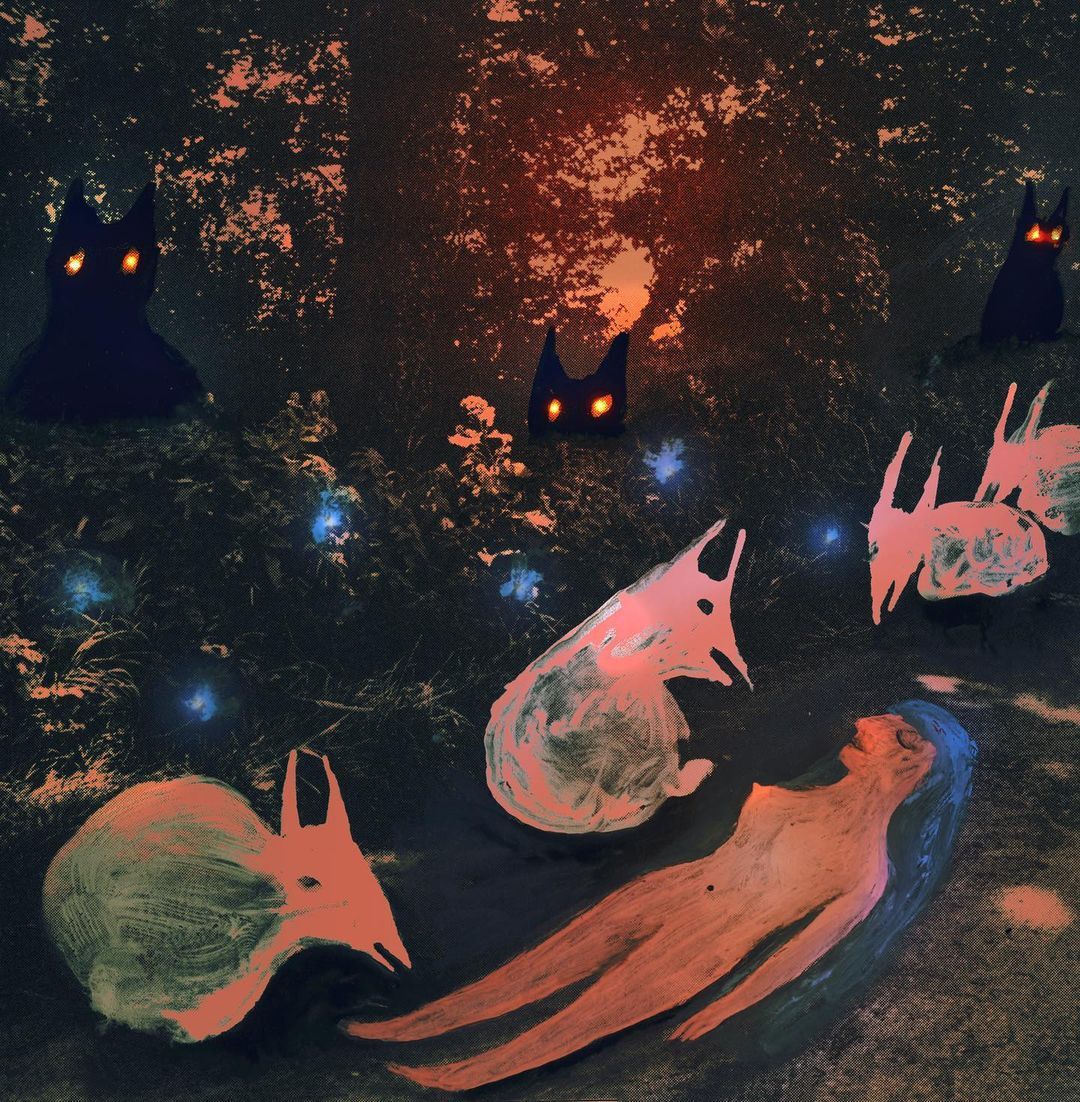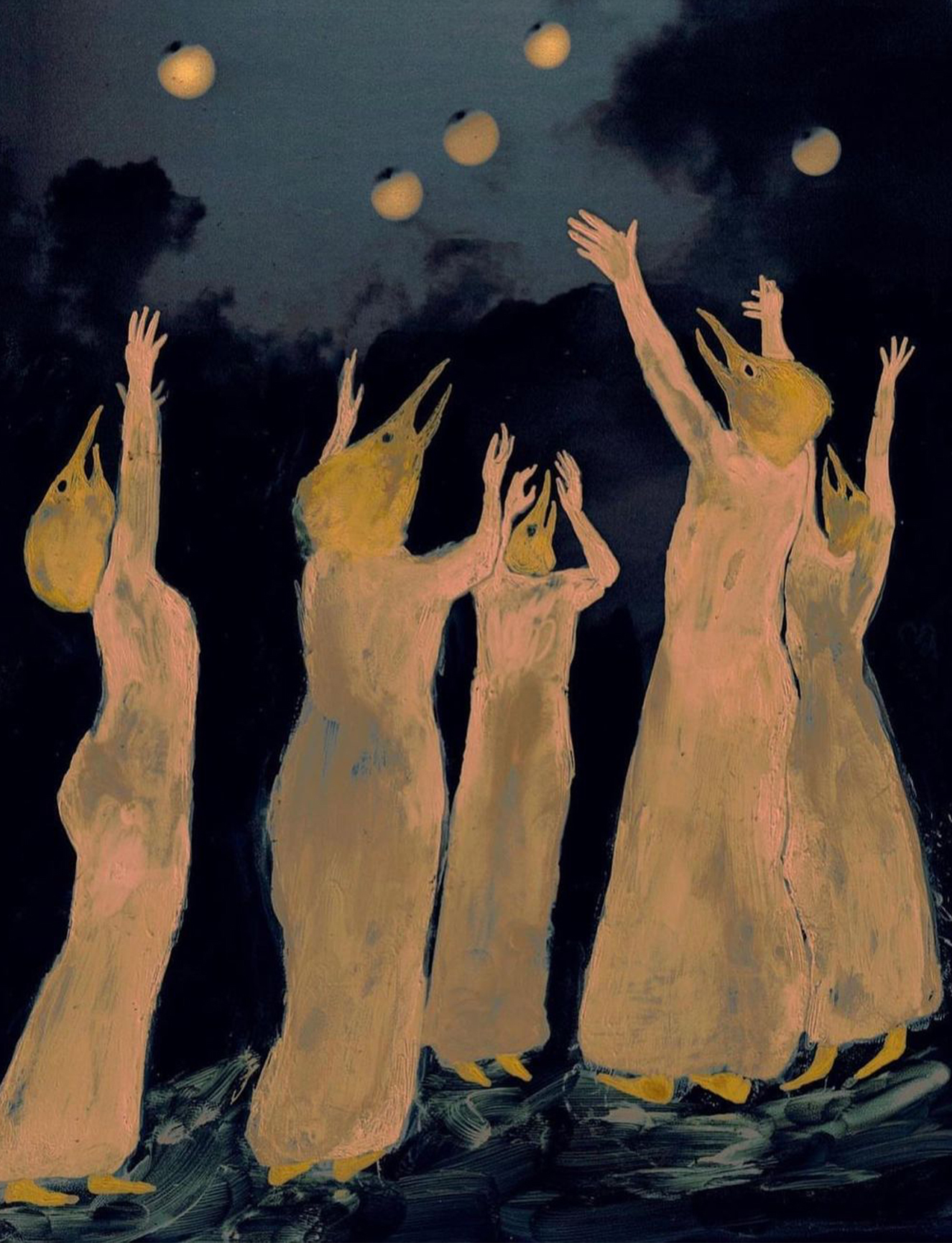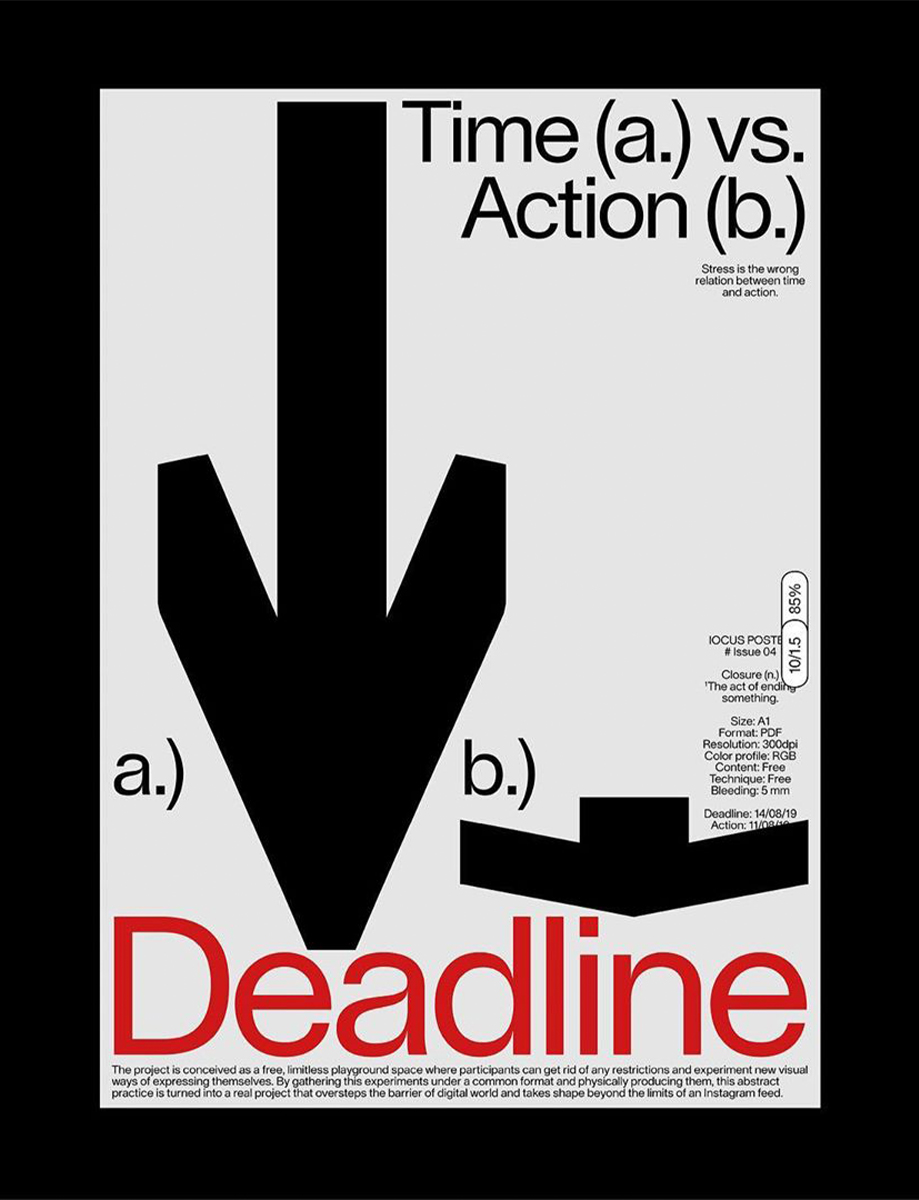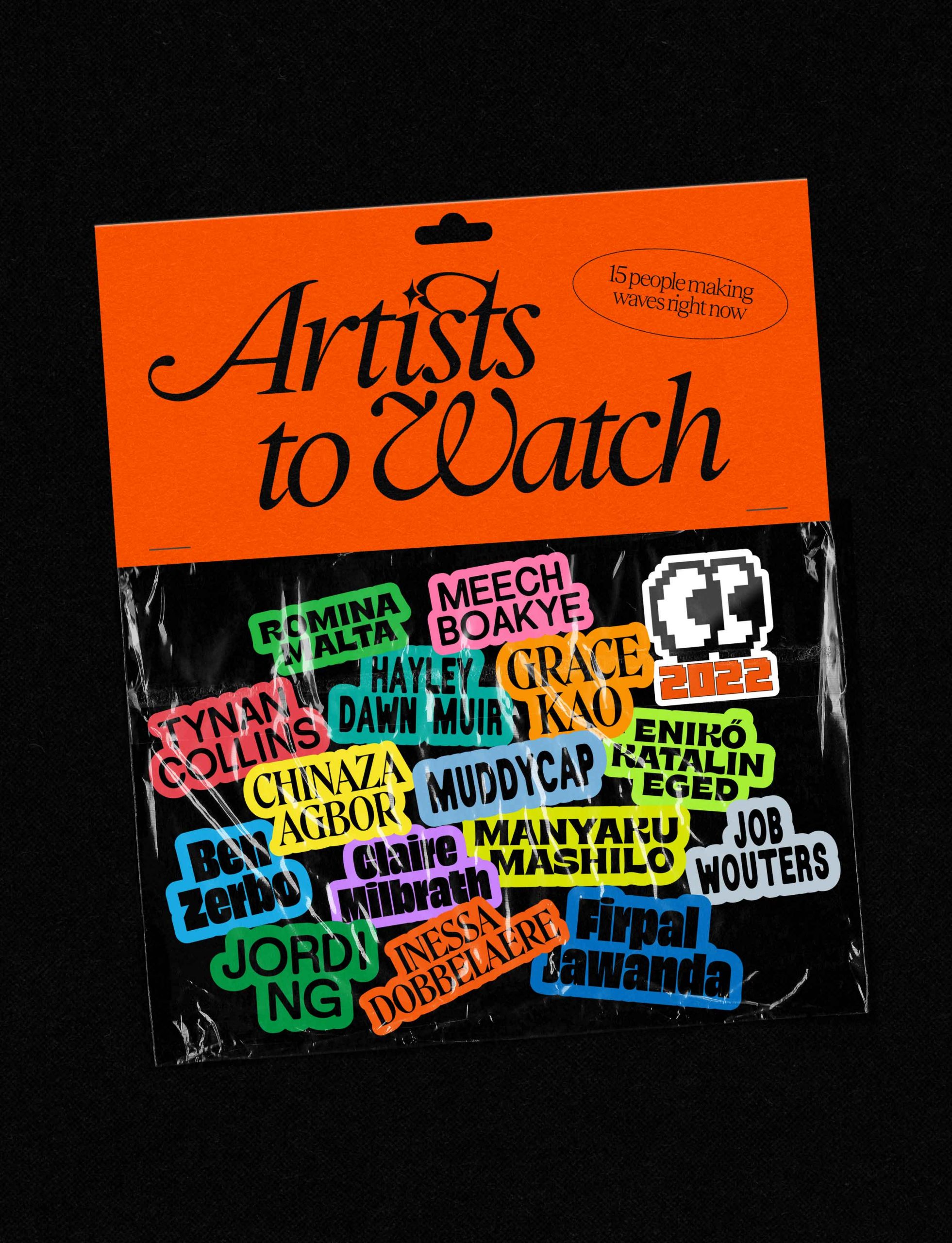When do you feel most creative?
It might sound banal, but I feel most creative when I am well rested; either when I’ve had a good night’s sleep or after I’ve practised meditation. It’s all about having a neutral mind, with emotions and thoughts being processed and balanced. Maintaining mental hygiene is an absolute necessity for me, as it means I can stay creative. And since I’m a full time artist, taking care of my mental and emotional health is my professional responsibility. I think the relationship between an artist and their mind is a bit like being a gardener – you constantly monitor the health of your plants, you trim them, you fertilise the soil and then, bham! Everything’s in blossom.

You grew up in Latvia, leaving to study in the UK aged 18, at Southampton Solent University then Manchester School of Art. How do you think your childhood in Latvia shaped your work?
Growing up in post-Soviet Latvia as part of a marginalised community, as well as independently immigrating to the UK at such a young age, definitely shaped my ‘outside the box’ thinking. Concepts like cultural or national identity, or the idea of belonging, made little sense to me.
I relied heavily on my imagination to navigate my childhood
I think my background made me want to pursue a career in the arts so that I could create my own definitions of normal. Now, part of my creative practice is to challenge notions of what it means to belong and to explore ideas around collective trauma.
It’s almost unimaginably surreal that I was born on the verge of one world collapsing, the fall of the USSR, and another one emerging, the Republic of Latvia. It was an uncertain, anxious time. Society was divided, the economy was on its knees and crime rates were very high. I think because the physical world was so unstable and unpredictable I relied heavily on my imagination to navigate my childhood, maybe this is how surreal artists are made.
And relatedly, how has studying and living in these other cities shaped and informed your practice?
Living in a city is like having a relationship with a person. So Southampton, Manchester and Stoke-on-Trent, where I currently live, were all special experiences with their own dynamics. Each city helped me to discover parts of myself I never knew existed, and my creative practice evolved alongside this personal growth.

Southampton was a bit of a shock to the system, a move that came from a spontaneous decision to become an artist and go to university. It was an overnight change of reality, a new culture, language and people. It really was an extreme and exciting experience and I fully immersed myself in it – manically experimenting with art during the day, waiting tables in the evening to support myself financially, staying late in the library reading or making art and partying till daybreak.
My style is influenced by the circumstances of my life
Stoke-on-Trent and Manchester were a totally different chapter in my life, and I do think the north of England has a different feel to the south. If the south could be characterised as an extroverted, outgoing personality, the north is more of an intense, introverted type, with its industrial architecture and unique underground culture.
This is also the place where I became a parent and started a family. My work went through a huge transformation then and I felt like I’d lost direction, so I chose to study a Masters in Illustration at the Manchester School of Art in order to disassemble my whole methodology and find a new path.
Being the parent of a young child, I only had time to do my Masters late at night, working at the kitchen table past midnight to try to put puzzle pieces together. My tutors were brilliant artists and inspiring guides and they taught me about the importance of methodology and a non-judgmental approach to my own work. I finished my Masters with the quiet confidence that things will work out as long as I keep showing up for my work.

You have an incredibly distinctive visual style. How did you arrive at this, and how did you know you’d found your mode as an artist?
My style has always been influenced by the circumstances of my life. Things like not having an art studio and also being a parent, it’s been essential for me to develop a practice for which environmental and time factors don’t inhibit my ability to make art. I had to find a way to make work outside time and space with the most primitive mediums available to hand, and it had to be flexible, transportable and approachable at all times, whether I work from my kitchen table or a train.
Intuition-led practice is also a focal point of my methodology. I believe creative energy is a moving force devoid from analytical thinking. Thinking helps with the logistics of maintaining your practice, but creative force has its own intelligence and you need to be ready to jump into work wherever there’s a knock on the door.
So the choice of mediums and source materials I work with is a mix of necessity and intuition. Working on a small scale, mixing collage and painting, and allowing my intuition to be a guiding force in all my creative decision making is what formed my style.

It’s like all my individual artworks are this one big piece of art
Are you guided by strong urges to finish every piece you start?
I see my practice as a continuous, ongoing process. So each piece I make is connected. It’s almost like all my individual artworks are this one big piece of art, a portal into this other world I’ve discovered and have a privilege to unravel.
When I work on a piece it’s like an archeological discovery. I am slowly dusting off layers of different realities in order to arrive at this one image. So I don’t really work with ideas of ‘start’ and ‘finish’, there is no beginning or end. It’s all about committing myself to continuously travelling to that place and peeping into that world and bringing the bits that I find back to this reality.

50% of the profits from your Healing Can Begin print went to the Red Cross Turkey Syria Earthquake Appeal. As a creative, why is it important to you to support disaster relief in this way?
It’s exciting to realise that as soon as an artwork is created and released into the world, it develops a life of its own and sometimes acquires powers beyond the artist’s comprehension. I often receive messages from people saying that my art inspired them to make their own art, or that I helped them through tough times, or even that it brought people together to fall in love (this really happened!!). Art can also be an activating button for people to put resources together to help those facing unimaginable scenarios, like the tragic earthquake in Turkey and Syria. It’s truly a privilege and a blessing to be in a place where I can organise an initiative like this.
When I work on a piece it’s like an archeological discovery

What’s on the horizon for you for 2023?
As with any coming year – keep making art, stay kind and keep learning. I also intend to run my first marathon this year, so I’m doing it (even if I have to crawl all the way!)
Read More: Khyati Trehan Likes Beginnings






